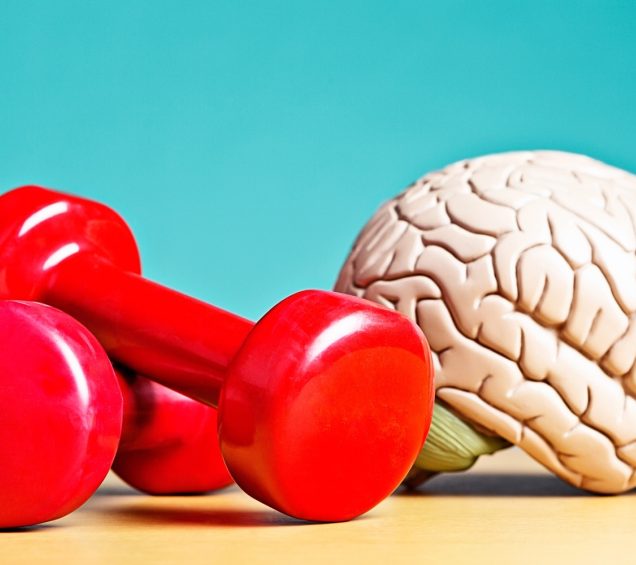PT for the Brain:
The Role of Neurotherapy in Addiction Treatment
When we have an injury, pain, or lack of functional mobility in the body, physical therapy helps us regain strength, motion, flexibility and ultimately allows the body system to handle future stress without injury. With physical therapy, we use various non-invasive therapeutic modalities to help this process such as exercise, e-stimulation, massage, ice, heat, etc. – that are specific to the individual’s physical needs to encourage change in the form of healing and functionality. We can do the same for our brain and nervous system.
Like our skeletal and muscular systems, our brain and nervous system can become dysfunctional due to similar factors such as chronic stress, lack of exercise, fatigue, reduced nutritional habits, substance abuse and injury itself. The outcomes of these factors when they impact our brain and nervous system have many different presentations, such as our ability to reason, self-regulate, manage compulsivity as well as many other executive functions. Due to neuroplasticity and neuro regeneration, the brain’s ability to repair and rewire, these changes are not permanent and, if we think of the brain as a muscle, we can train and improve its functionality . There are many interventions to optimize the healing and function of the brain. So when we talk about physical therapy for the brain, we are talking about identifying problem areas through assessment and then applying a modality of therapy – neurotherapy – to create that regeneration and reorganization.
Neurotherapy consists of various non-invasive, non-pharmacologic interventions that promote targeted healing and regeneration in areas of the brain that are compromised. Particularly with substance use and addiction, neurotherapy can serve as a key to unlock change in the nervous system that has undergone rigorous habit formation through the impacts and consequences of excessive drug use. For example, if the nervous system has been pushed into a position of hyperarousal (over excitability) due to drug use, it can be very difficult for that person to utilize their executive function to use reason and rationale through therapy, control mood and temperament, and ultimately learn new clinical techniques they are being taught. By addressing the excitability of the nervous system through neurotherapy, we can try and give the individual the ‘brain capacity’ back to benefit greater from the clinical therapeutic process. Neurotherapy can act as a huge support system to substance use recovery and many other mental health challenges.
The Role of Brain Mapping
The ability to utilize a full neurocognitive assessment is extremely valuable in many ways. Primarily, it serves as a comprehensive view of the individual through multiple data points. Using multiple testing and assessment measures across different disciplines allow us to assess functionality of multiple different systems including the brain and nervous system, which can include: Quantitative EEG (QEEG) or brain mapping as it is commonly known, psychological testing, neuropsychology testing, psychiatric evaluations, and medications/MAT, along with lab work and medical screenings.
We understand the brain does not have to lack structural integrity to have persistent symptoms and challenges that are so difficult to overcome. However, we can address the brain’s functional integrity to provide significant insight to symptoms and presentations.
When we assess brain functionality, it’s important to consider assessment in different ways. The brain is electrical, chemical and molecular, and we should consider each variable. We can utilize QEEG or brain mapping to assess electrical function, while brain metabolism and blood flow testing can be done through FDG-PET and FMRI scans alike. Particularly with QEEG or brain mapping, it’s an extremely accessible, non-invasive and cost effective neuroimaging assessment that can provide a wealth of information that would often go overlooked in a typical assessment practice. The ability to look at specific regions of the brain and determine functionality relative to symptoms and presentations can be invaluable.
It’s past time to assess the brain for addiction and mental health. If you had something wrong with your heart or your lungs, the doctor or a specialist would be able to pull up those images and say, here's why you're fatigued or constantly lethargic, or this is why you're having breathing problems . They can pull up these images and provide the person with proof or relief to say “there's a physical problem here.” That means we can do something about it, and they can get better. But for a long time, when we talk about things like anxiety, depression, trauma, cognitive concerns, attention, memory, development, or whatever the case may be, people have the notion of ‘something is wrong with my brain,’ but we don’t think to go and look at it or that what your experiencing could be helped by addressing the physical.
Neuroimaging techniques like QEEG/brain mapping have the capacity to show people that regions of the brain involved in emotional and behavioral concerns are not functioning electrically as well as they should be. This provides someone the validation to say, okay, here is objective data that indicates my brain does not have the capacity to help break my anxious habits, or why it is hard for me to stay on task at work or school. Most importantly, understanding that the brain can regain function through neuroplasticity, and it can be reassessed over time, provides motivation and inspiration to get better. Neurotherapy plays a big role in that rehabilitation process. It is such a unique and rewarding aspect as a clinician or a provider to be able to provide this information.
A Peaceful Process
Unlike traditional physical therapy, which many jokingly refer to as “pain and torture,” neurotherapy can actually be quite relaxing or peaceful. Some modalities can provide measurable feelings of calm and relaxation directly during and after a session, while some modalities don’t provide noticeable change. None the less, change is happening below the surface. Consistent neurotherapy over time can allow the brain to make permanent changes once we have the right lifestyle support around us (like the relationship of exercise and nutrition/sleep). There are direct and non-direct ways of treating the brain and nervous system from a physical capacity.
Neurotherapy modalities include:
- Neurofeedback
- Low intensity stimulation techniques (cranial electrical stim, direct current, alternating current, noise)
- Photo biomodulation/ Light Therapy
- Frequency Training Cell Therapy
- Bio acoustical devices
- Hyperbaric Oxygen Therapy
Treatment recommendations are tailored to individual needs, and some are recommended while in treatment or to pursue once someone moves on to their next level of care. These modalities may be implemented individually or in combination for an integrated approach. For example, at Caron, depending on need, a patient may receive stimulation for the first 20 minutes of a session to help calm the nervous system and create a basis for the nervous system to be more flexible and receptive to learning (like stretching before exercise). T hen, they may move on to neurofeedback– a self-regulation technique– to allow the brain to encapsulate and solidify learning.
Part of an Integrated Treatment Program
Neurotherapy alone is not going to fully restore someone to the point of optimal brain health. It's an integrated approach. They still need the clinical work, the family work and everything in between to strengthen their skills for navigating recovery. Neurotherapy supports that other work – helping to relay the foundations of the nervous system and creating the ability to better engage in other evidence-based treatment modalities.
As with physical therapy, you must keep doing the work once you leave treatment at Caron. Just as you would need to keep doing exercises to keep your knee or shoulder strong, you also need to continue the practices that will reinforce those new neural connections. I tell my patients that this is their starting point, but it's going to be a long journey of using these tools to manage themselves to a point of healthy functioning, and potentially full restoration . Obvious things such as good sleep habits, nutrition and meditation all have strong data supporting brain health. The tools of recovery are also essential – going to meetings, working with a sponsor, practicing gratitude – all of these go along with supporting healthy brain changes and recovery.
Take the next step:
Start with an online form
-
Caron in Pennsylvania
1-800-854-6023 -
Caron in Florida
1-800-221-6500 -
Breakthrough at Caron
1-800-213-7834

